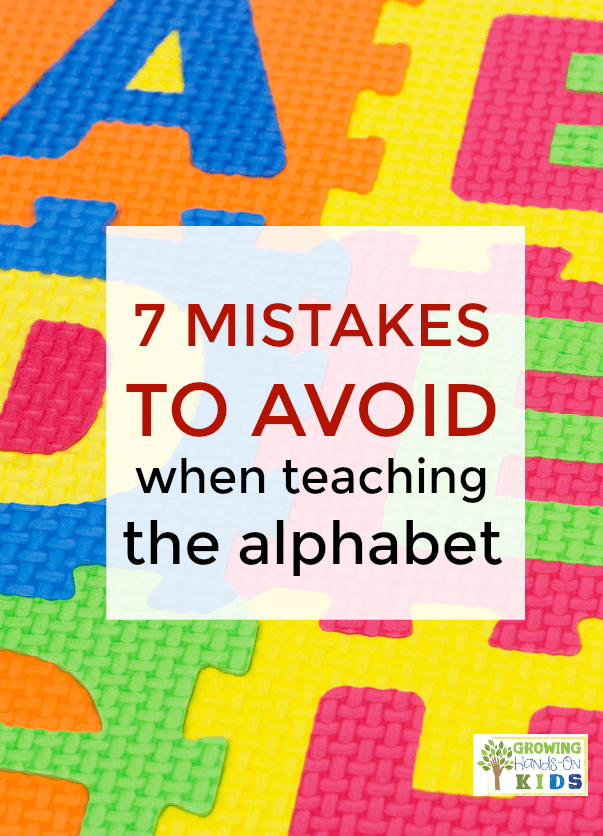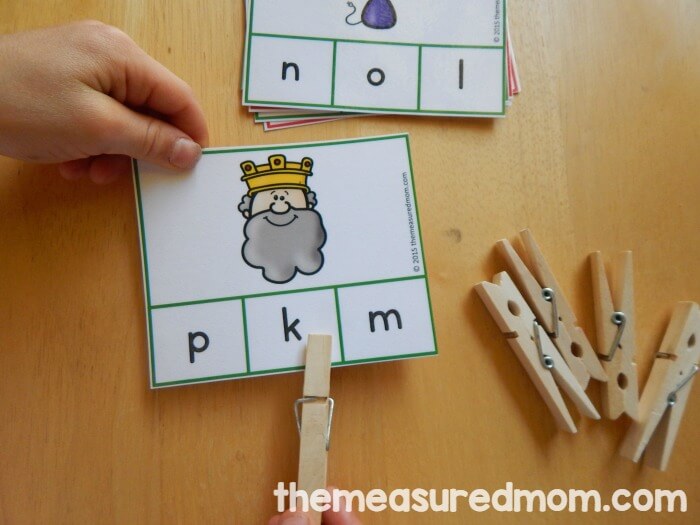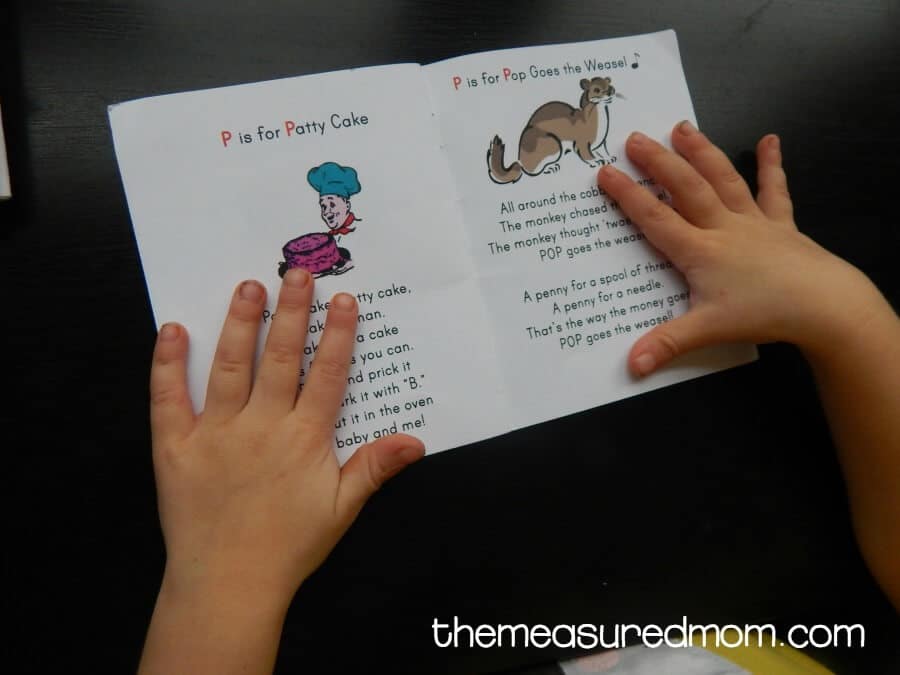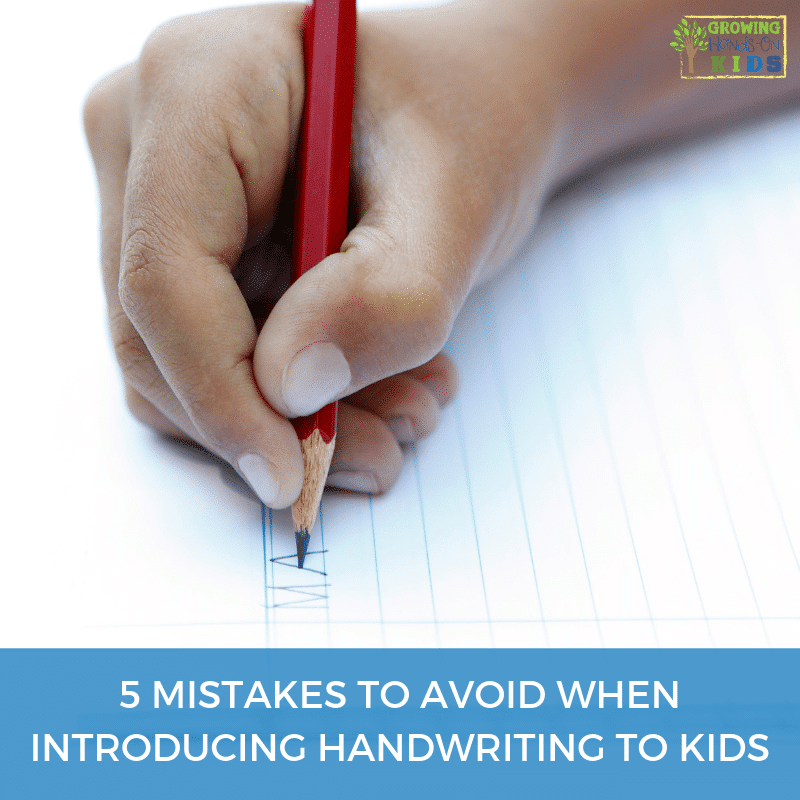7 Mistakes to Avoid When Teaching the Alphabet to Your Preschooler
Affiliate and Referral links are used below to promote products I love and recommend. I receive a commission on any purchases made through these links. Please see my disclosure policy for more details. As an Amazon Associate, I earn from qualifying purchases.
Are you teaching the alphabet to your preschooler? Here are seven mistakes to avoid.
I'm Anna Geiger, creator of The Measured Mom, and I'm so grateful to Heather for allowing me to guest post on her blog today.
As a former teacher turned SAHM, I've had the joy of teaching the alphabet to our oldest five kids. There's nothing quite like the day the light goes on and they start recognizing letters all around them!
Are you teaching the alphabet to your child? Here are some common pitfalls to avoid.
7 mistakes to avoid when teaching the alphabet
Mistake #1 – Too many worksheets
If you're new to teaching the alphabet, you might think that worksheets are the way to go. Hunt for “preschool alphabet worksheets” on Pinterest, and you'll find a ton. Should you use them?
Most of the time – no. Worksheets don't teach – they simply let you know what your child has already learned. Pull out the worksheets after you've taught the alphabet, and only if your child enjoys them. (Here's a pack I recommend if your child is the worksheet type.)
Mistake # 2 – Not enough hands-on learning
If we're not doing pencil and paper worksheets, we need to do hands-on learning. But many of us don't quite know where to begin. What is there, after all, beyond worksheets?
Oh, so much!
- Do sensory activities related to the alphabet
- Do fine motor activities to strengthen those little fingers
- Find active ways to learn the alphabet
- Use hands-on printables such as Do-a-Dot pages and alphabet clip cards
- Try some process art activities
Mistake #3 – Not enough variety
It's not hard to find a letter of the week curriculum that uses the same activities each week. But this is a surefire way to bore both you and your learner. Mix it up!
Mistake #4 – Expecting kids to write their letters before they're ready
I can't tell you how many times I've received emails from people concerned that their 3-year-old isn't writing his or her letters yet.
Most preschoolers are not ready to do traditional handwriting pages. And when we expect them to, we burn them out.
Instead of expecting your child to write the alphabet, focus on pre-writing strokes instead (you'll love this handy resource). Lay off on the handwriting until your child is closer to kindergarten. And when you do start, there's no rush to write on the lines. Try these easy no-line pages instead.
Mistake #5 – Insisting that your child finish an activity the way you expect it to be done
As much as we might like neat little crafts and worksheets, our preschoolers usually have a different idea. And that's okay.
And then there's the day you prepare an activity you're sure your child will love – only to find it fall flat. That's okay too.
Mistake #6 – No flexibility
If you're a Type A planner, you might want to write out your plan for the whole six months. Because that's about how long it will take to do a Letter of the Week study, one letter per week, without breaks.
Except … how do you know how it's going to go? Maybe your child needs some time to let it all sink in. It might take you a full month just to learn the letter A. And maybe, come month three, your child is zipping through the alphabet faster than you can keep up. You might want to double up on the letters in your last month. Be flexible!
Mistake #7 – Forgetting to read
Okay, maybe you read #6 and laughed a little. Planning six months in advance? Ha! If you're anything like me, you're taking life day by day. If that's true for you, don't beat yourself up when you go a day (or, ahem, weeks) without focused preschool learning. The good news is that the most important thing you can do is easy, no prep, and requires no computer ink.
Just read. Read to your child as often as you can. Talk about books. Love books. Treasure books. Not sure where to begin? Our Letter of the Week book list is a great place to start.
And if you've got some ink to spare, you might want to print our free letter books. I created these for my first grader when he was two years old – they were the perfect introduction to the alphabet.
Author Bio: Anna Geiger is a former teacher (MEd.) turned SAHM of six (ages 1, 3, 5, 6, 8, & 9). She is the writer and creator of The Measured Mom, where she supports parents and teachers with free printables, hands-on lessons, and other teaching resources.
For more ideas like this one, check out these resources below.
You May Also Like:

Heather Greutman, COTA
Heather Greutman is a Certified Occupational Therapy Assistant with experience in school-based OT services for preschool through high school. She uses her background to share child development tips, tools, and strategies for parents, educators, and therapists. She is the author of many ebooks including The Basics of Fine Motor Skills, and Basics of Pre-Writing Skills, and co-author of Sensory Processing Explained: A Handbook for Parents and Educators.





I agree with these tips, especially having variety and being flexible in teaching. Their paces are different so it really takes time and patience to teach them the alphabet and get them to read words.
As a first grade teacher, it is almost impossible for me to unteach a child who writes his names in all caps and then needs to write it properly with a capital first letter and the rest lowercase. So to teach it wrong to begin with is silly. Teacher the right way. The children are capable.
I agree with the comment about kids blossoming about age 4. The idea that exposure is among the most important first steps is one of the ideas I hold most true. Teaching the letter names and sounds at the same time is how I went for my daughter but I was sure she knew that the uppercase “mommy letters” and lowercase “baby letters” had the same name and sound.
I got this idea for teaching that pesky L-M-N-O-P section of the alphabet song from Open Court Phonics….it is sung to the traditional alphabet song but the letters of that section are broken down differently…it goes:
A-B-C-D-E-F-G
H-I-J-K-L-M-N
O-P-Q
R-S-T
U-V-W
X-Y-Z
Now I know my A-B-Cs
Next time won’t you sing with me?
It works like a charm.
Now to get my students to stop saying H-Ji (long I sound)-K…etc. They blend the H and I sound to say Ji.
I love this! We started a letter of the week a couple weeks ago but this would have been nice to have taught a long time ago. I’ll start this one tonight.
Hi, a great list of ideas but, as a Junior Primary Teacher, I am disappointed it didn’t include the following points:
(1) Don’t teach your child to write their name in all capital letters!! (i.e. it’s Taylor, not TAYLOR, or Ruby, not RUBY)
(2) Start teaching them the lower case letters first – starting with their name is a good idea, and only use a capital for the first letter of their name.
(3) Teach them the SOUNDS of the lower case letters, then gradually teach them the NAMES of those letters.
(4) Teach them the fact that EACH letter has a ‘name and a sound’, so a ‘t’ makes the sound ‘t’ and it’s name is ‘tee’ and ‘m’ says ‘mmmm’ and it’s name is ’em’ etc.
(5) Teach them the uppercase (capital) letters and also teach them that each letter has a sound and a name, so T says ‘t’ and it’s name is tee, and M says ‘mmmm’ and it’s name is ’em’
(6) DON’T add an ‘uh’ sound onto alphabet letters! So a ‘c’ is a sharp ‘c’ sound, NOT “cuh’ and ‘t’ is a sharp ‘t’ sound, NOT ‘tuh’. SOME letters are hard to say without an ‘uh’ sound such as ‘b’, ‘d’, ‘g’, ‘j’, ‘q’, & ‘w’ but don’t add it to other letters!!
(7) SLOW DOWN when you sing the “ABC” song, and really emphasise the L M N O P section, as many, many kids think there’s one letter called “ell-em-en-oh-pee” rather than realising it’s FIVE separate letters! 🙂 I usually point to the fingers on my left hand and make the kids say one letter (L) as I point to my thumb, the next letter (M) as I point to my ‘pointing finger’, the “N” as I point to my “tall man finger”, the “O” as I point to my ring finger, & the “P” as I point to my pinkie finger.
(8) Gradually match the lower-case letter (i.e. the b) with it’s Uppercase letter (B) and teach your child they BOTH say ‘buh’ and they BOTH are called “Bee” and we only use the CAPITAL “B” in special situations but most times we write just using lowercase letters. Same with all the other letters…the lowercase t and the uppercase T both say ‘t’ and both are called ‘tee’. The vowels (a e i o u) do have 2 or more sounds and so can be confusing but if you want to do a thorough just, teach them the 5 vowels, tell them that some letters in the alphabet are special and can make 2 or more sounds in words and they’ll learn all the sounds when they get to school age. 🙂 (C says ‘c’ as well as ‘ssss’ in some situations, ‘g’ says ‘guh’ and also ‘j’, and ‘y’ says ‘y’, ‘ee’ and also ‘high’!!)
(9) If you write a word or sentence or story for your child, write it in lowercase, NOT all capitals! Only use capital letters for names, places, first letter of a sentence etc.
Thank you for your perspective, Mim!
I agree with some of your points, but not all. First, I don’t encourage parents to start with lowercase letters because they are often harder to distinguish and certainly harder to write. If parents start teaching the alphabet at a young age, there is plenty of time for children to learn to write their name in a capital and lowercase letters before kindergarten. I agree with the perspective that Jamie of Play to Learn Preschool shares in this post: http://playtolearnpreschool.us/learning-to-write-2/
I have heard the perspective that parents should teach letter sounds before letter names, but it isn’t one I personally advocate only because I haven’t found it to be necessary. I understand that it may work very well for some students.
You bring up an excellent point about saying letter sounds correctly without adding that “uh” sound at the end. So important! I also agree that slowing down with the alphabet song is important when children are ready to learn the alphabet. (I don’t slow down my one-year-olds when they sing the alphabet – to them it is just a song and doesn’t have any meaning yet.)
I also appreciate your point about using capitals and lowercase letters when modeling writing for our children.
Thank you for so much for sharing your perspective!
Hi Anna,
Thanks for your reply! 🙂 I guess I am coming more from a ‘Kindy, Year 1-2’ (i.e kids aged 5-8) teacher’s perspective rather than from a 0-3 year old point of view in some of my comments.
There’s no harm in teaching the alphabet names at anytime and yes, for most kids it’s just a song, but gradually they add meaning to that song and that’s when the astute parent or educator needs to watch out for the “LMNOP” issue and correct it and, by correcting it, they are showing their child the ‘sounds’ they are making with their mouth actually relate to the ‘funny black squiggles’ that Mum/Dad or Teacher keep writing and in turn, it will add to their print awareness. Win/win! 🙂
My main ‘beef’ with people teaching the ‘alphabet’ to kids is, the kids often “learn” that uppercase A says ‘ay’ and the lowercase ‘a’ says /a/ or that B says ‘bee’ and ‘b’ say /buh/, etc. And so, the kids have trouble reading words that contain capitals because they ‘spell’ it out rather than ‘sound it out’ and then can’t decode the word. In my teaching, parenting & tutoring careers I’ve had a lot of ‘unlearning’ or re-educating of kids to do!
Once again, thanks again for replying & for the resources you provide. I use some of them with my tutoring students!
I thought it was ok to teach kids to write the upper case letter fist, since must of the upper case letter are easier to write than the lower case.
As a preschool teacher I’ve learned the most important things are to make it fun, do it a lot in a bunch of different ways, and don’t shove it down their throat. There is no need. Kids usually begin blossoming towards readiness skills at 4 not typically before then. But when they are ready you will know. When they are ready jump on it and point it out EVERYWHERE immerse them in games and activities. Learning to listen for sounds and rhyming are equally as important as letter recognition.
Exactly!!! I agree 100%